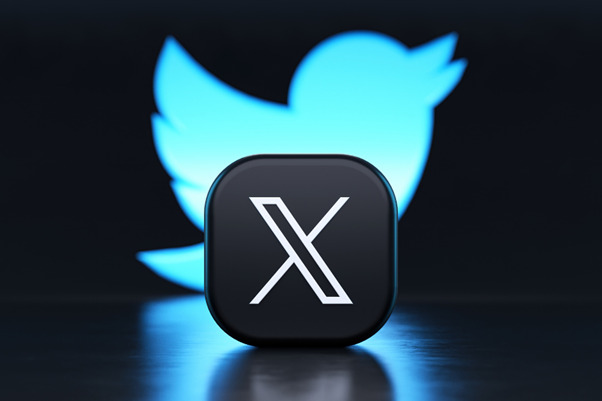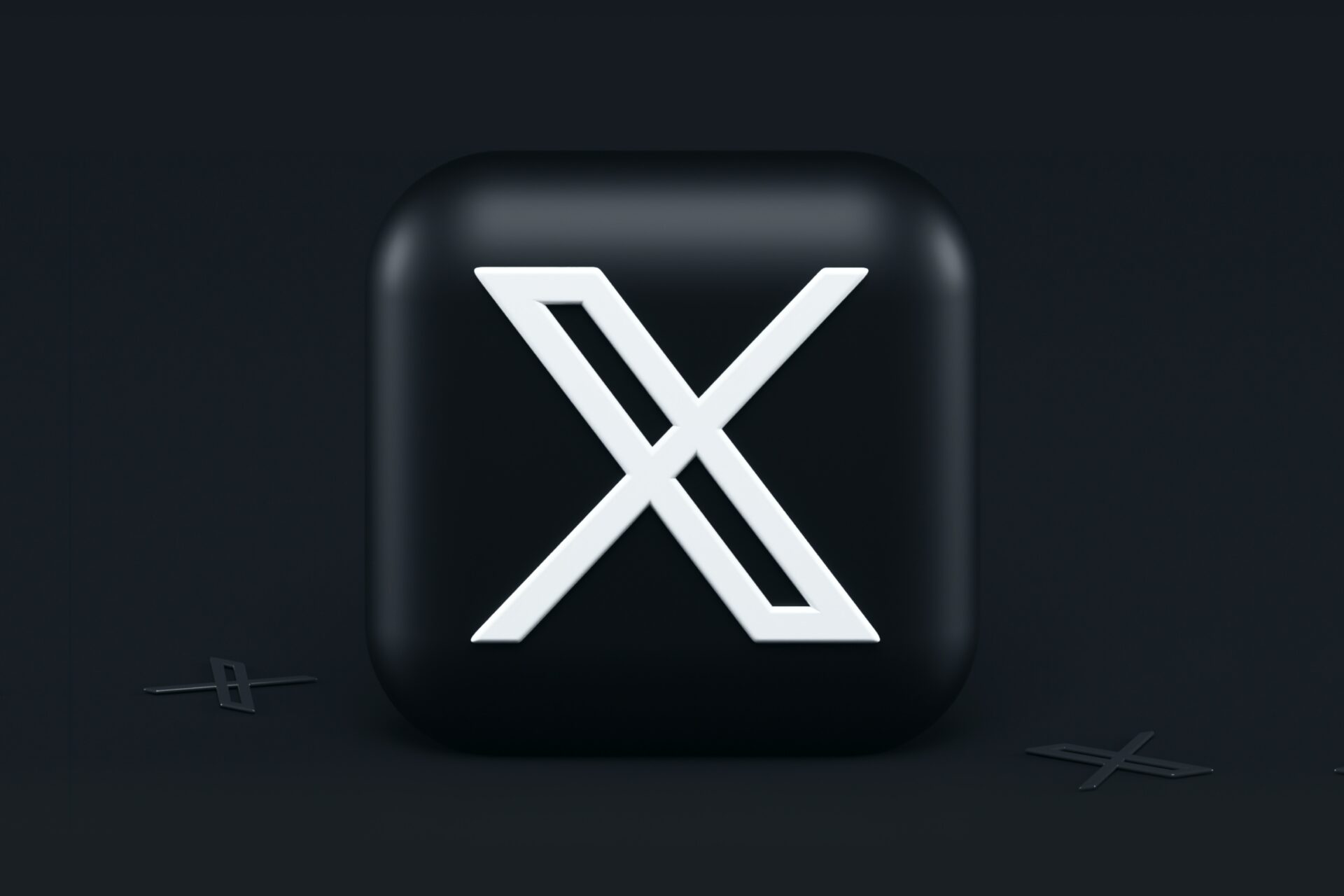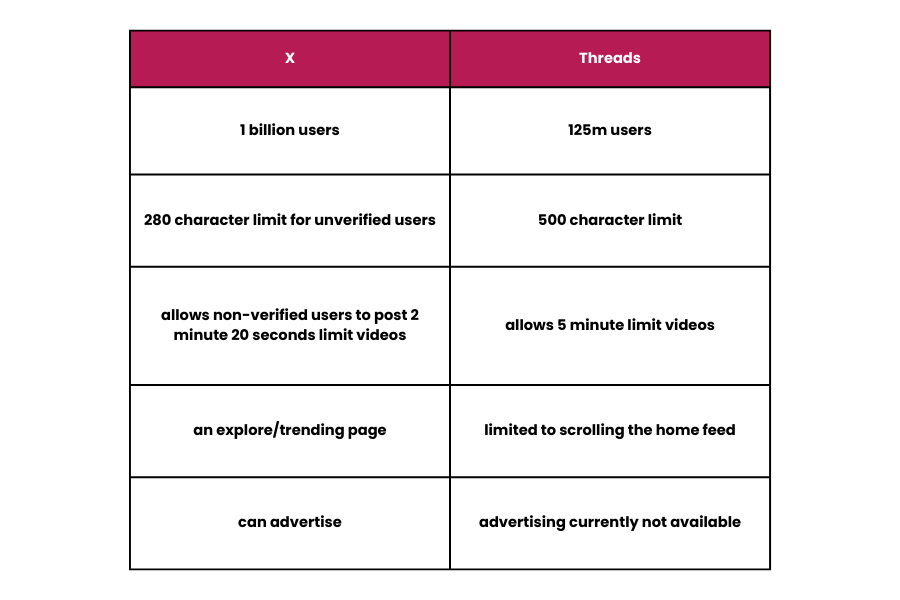
Last year Twitter saw a drastic change in its direction with Elon Musk taking over the tech giant. Earnings since Musk took over have fallen dramatically, but the question is: what does the changing beast of Twitter (or X as it’s now called) mean for marketers?
Our Paid Social Team Lead, Mahfuz, takes us on a whistlestop tour of all the key changes to Twitter/X and answers the key question of whether we should be marketing on the platform at all now.
Why Did Elon Musk Buy Twitter?
Elon Musk has been a longstanding and influential Twitter user, publishing his first tweet in 2010. Musk is known for his unpredictability and eccentricity but when it was announced in October 2022 that he would purchase the platform, many were still surprised – wondering what a man who owned a car company knew about a tech platform. However, Musk’s take was that he could monopolise the platform from being a frequent user and understood how to capitalise on it to promote the rest of his business. The cynics among us would also say that Twitter was the only big platform that was fragile enough to be taken over, with numerous high-profile mishaps surrounding the removal of problematic tweets and the platform’s lack of strong brand security causing large household brands to quit advertising prior to Mr. Musk’s takeover.
Twitter Becomes X
The rebranding of Twitter to X began at the end of 2022, when a number of tweets bid farewell to Twitter and Elon Musk showcased the new ‘X’ logo and branding.
The move from Musk to change Twitter to X comes as an attempt to turn the predominantly news and conversation-based social network into a super app which will offer everything from TikTok style videos, conversations, payments and more.
There is a broader plan that X will be powered by AI and its CEO, Linda Yaccarino, said that it will be “centred in audio, messaging, payments and banking”.
The name ‘X’ has run throughout Musk’s ventures, including:
- His first startup ‘X.com’ (renamed to PayPal after a merger)
- SpaceX
- Artificial Intelligence (AI) app, xAI
- Tesla Model X

Why Is Twitter so Toxic?
As Musk took hold of the social media giant, many saw a change in the way the app managed content. I’ll go into more detail below but in broad – the social network became more commercially incentivised which detracted the appeal of it to a lot of users. At times it felt quite authoritarian in its policies, including banning accounts linking to rival social media platforms, a policy it has since retracted.
The unconventional way Musk leads the business – including posting polls to the public on whether he should step down as CEO – paired with the changing feel of the social network has meant a huge decrease in projected users.
What Are the Key Changes With Musk at the Helm?
It’s not just the name, there are numerous other planned and existing changes occurring on the platform.
Video and voice calls coming soon
This is part of the move to make X an ‘all-purpose’ app. It’s an interesting concept, as traditionally audiences are used to segmenting the purposes of their social media apps: Instagram for photo sharing, TikTok for video etc. But with Instagram including calls on its platform too, the move from X could work. On the flip side, Instagram is a Meta-owned brand, so it is seen as an evolution and consolidation of Messenger and Facebook, which were inherently comms apps to connect with other people, instead of voicing public opinions, which Twitter developed as its ‘purpose’.
This development from X won’t have a huge impact on marketing strategy, however it may open up more ad solutions that brands may be willing to engage with, such as the call ads on Meta.
Plans to implement a payment feature
This is not unique to X, in fact most apps are trying to simplify the lives of their users and keep them on-platform by letting them do in-platform payments.
E-commerce brands would ordinarily welcome this development on a social media platform, however in light of the en-masse quitting of X by the political left, brands may feel that it isn’t worthwhile to have in-app payments if your audience isn’t even on the platform.
Twitter Blue
Twitter Blue was introduced in December 2022 and is now called ‘Premium’, it’s essentially monetising accounts becoming verified. It costs $8 per month for individuals, $1,000 per month for organisations and $50 per month for affiliate accounts.
The benefits of Twitter Blue include:
- Being able to upload longer videos (up to three hours long)
- Being able to create a community
- Having access to a media studio
- Having access to X Pro
What is X Pro?
Formerly known as TweetDeck, X Pro is an integrated feature that allows for the management and viewing of multiple accounts in one place. As of 17th August 2023, it is only available to premium users with a subscription.
The shift to AI
We’re not entirely clear how the platform will change with this ‘shift to AI’, there has been a lot of talk around it but not much practical information.
Introduction of an ad revenue sharing programme
This feature rewards X premium/Twitter Blue subscribers by offering payouts on part of the ads being shown in their tweet threads/replies. This is soon to expand to profile page views too. To be eligible for this you must have at least 500 followers and at least 5 million impressions each month for three months from verified users.
The development here isn’t likely to make a massive impact on organisations willing to be on X, as the payouts seem to be in the 4-5 figures for the largest individual followed accounts, though if played correctly it could essentially become a way to pay for X ad spend if your follower count is large enough and people interact with your brand enough.
X for Business
With this update, companies can pay for a ‘verified organisation subscription’ for $1,000 per month. Verified organisations receive a gold checkmark and a square avatar, verified affiliate accounts receive the checkmark and an affiliate badge which is a small image of their parent company’s profile picture.
According to X, companies with an X for Business account will receive the below benefits when running ads on the platform.
- +62% ad recall
- +13% brand awareness
- +8% message association
- +7% preference
It’s also described as allowing brands access to a conversational platform where businesses can get informal feedback from users through polls, tweeting questions and the like. You can also create a dedicated customer service account which allows quick solutions to customer problems.
Advertising sensitivity settings
Advertisers on X can choose between ‘Relaxed’, ‘Standard’ and ‘Conservative’ options for how to serve ads on the platform. Advertisers using the ‘Relaxed’ option will have cheaper CPMs, but the ads are more likely to be shown next to spam or irrelevant content.
This could be a move from X to draw advertisers back onto the platform but with weak brand security and the uncertainty Elon Musk poses, it’s doubtful to convince advertisers to come back in droves.
X vs. Threads
As X has rebranded to an ‘everything app’, the history of Twitter being the go-to place for public conversation is at risk, so could Threads take over? Before we dive into this question, let’s take a look at the key differences between the platforms.

Threads’ daily active users on Android dropped from 49 million on 7th July to 12.6 million on 23rd July. It’s clear that Threads is struggling to keep users in the app, whereas Elon Musk tweeted that X had reached a ‘new high’ in terms of users at the end of July. Even without Musk’s tweets taken into account, Threads is unlikely to take over Twitter as the go-to platform for public conversation given the struggle to keep engaged users.
Should We Be Marketing on X?
The benefits of marketing on X
According to X themselves, the following benefits can be seen when brands market on X.
- 79% of users on X like to discover what’s new and 53% of people on X are likely to be the first to buy new products
- X is the number one app for discovery with 528.3 million users, a growth rate of 12.5% and users spend on average 30.9 minutes on the platform per day
The campaign objectives you can set are very similar to other social media sites and include:
- Awareness: Reach
- Consideration: Video views, pre-roll views, app installs, website traffic, engagement
- Conversion: App re-engagements, website conversions
The drawbacks of marketing on X
- The platform is very expensive to advertise on right now, even in comparison to LinkedIn
- The loss of followers has hampered the amount of effective reach
- There are potential issues with brands associating with a ‘problematic’ platform and owner
- There are potential clashes in values of businesses and the values of X
Overall, at this moment in time, it’s important for brands to weigh up who their audience is, where they are online, including which social platforms they tend to use most. If your audience is engaged on X and your brand’s values don’t clash with those of the platform, then it makes sense to run activity on X. For most brands this will not be the case and it may do more harm than good to have your brand associated with the problematic platform, as well as media spend being put to better use on alternative social media platforms. This being said, things could change depending on the success of Musk’s goal to make X a catch-all app, so we’ll definitely be watching the space.
Selecting the right social media channels in your organic and paid strategies can be a challenge, especially with macro factors such as changing ownership playing more of a part. If you’d like to chat with one of our strategists to determine what channel mix is best for your brand, please get in touch today.